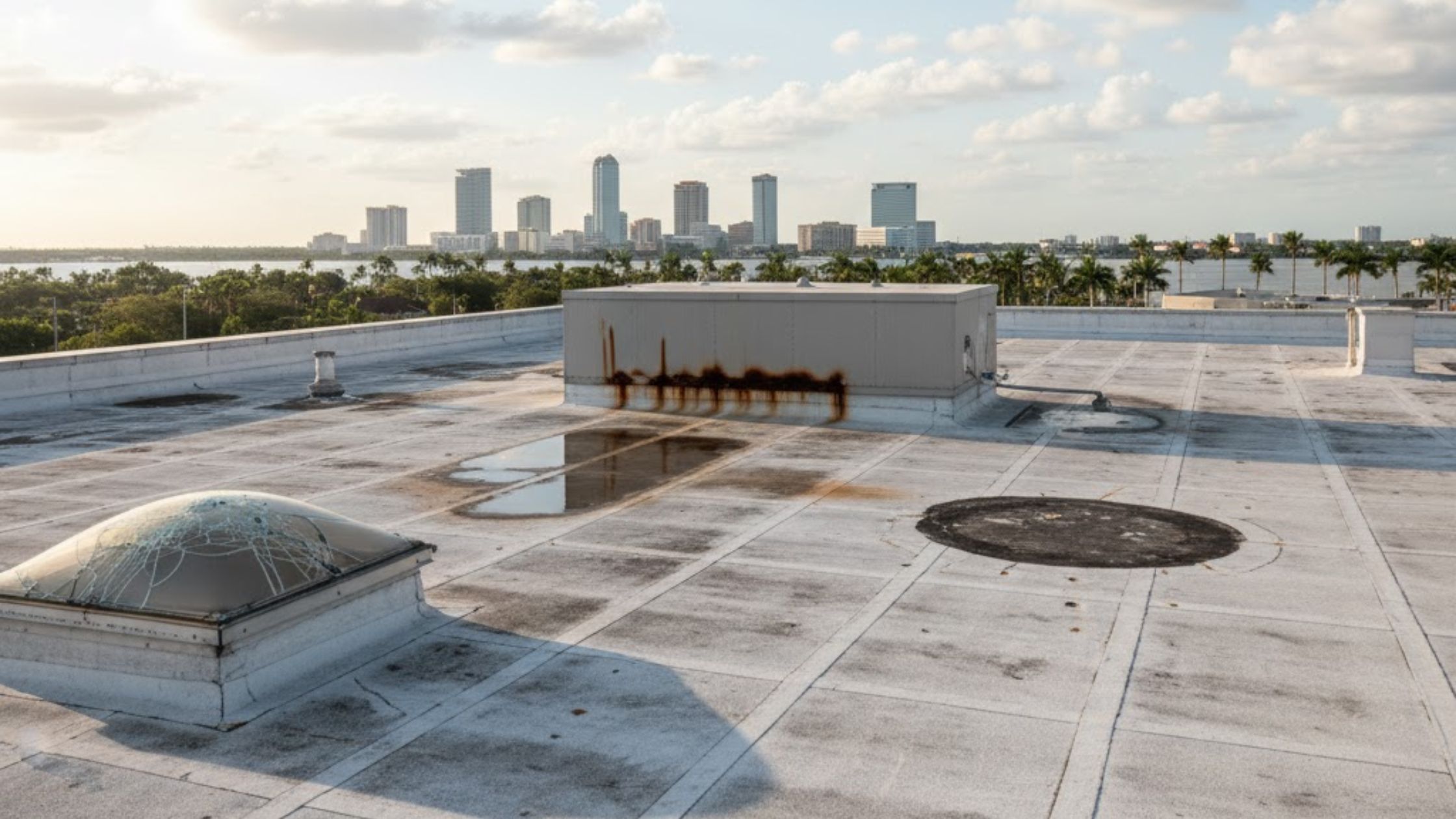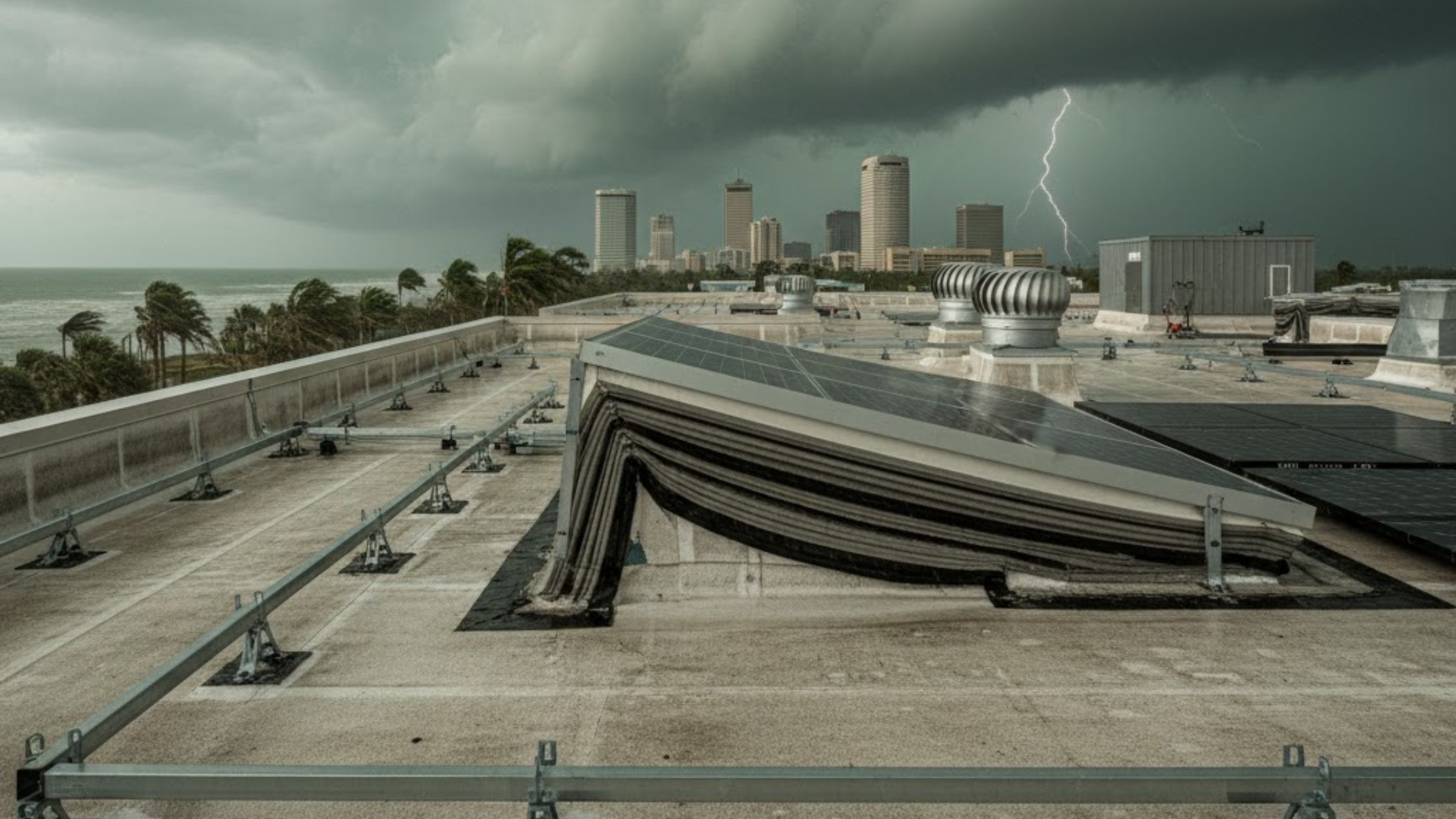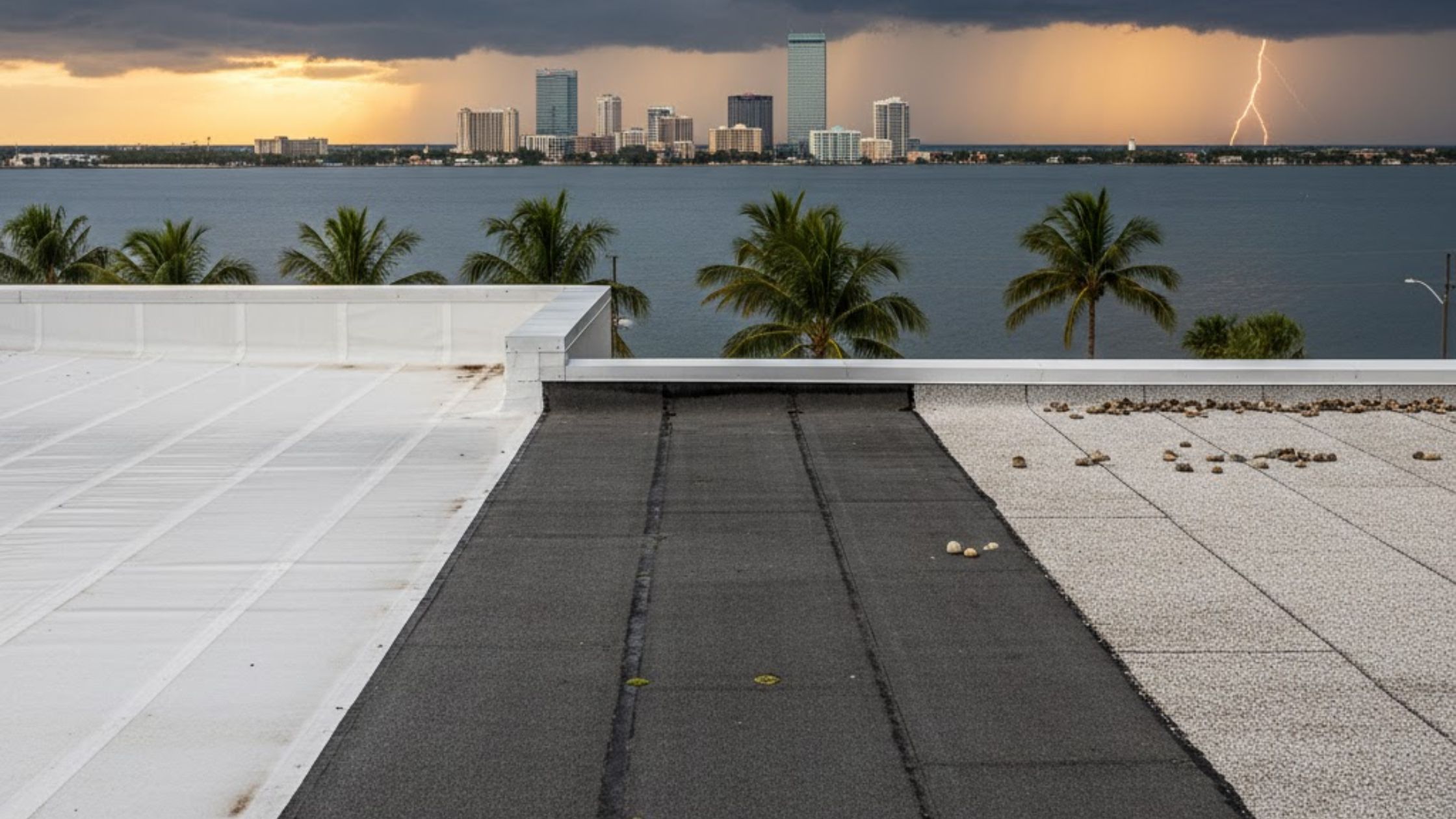How Often Should Clearwater Businesses Inspect Their Commercial Roofs?
Clearwater businesses should inspect commercial roofs at least twice a year. Avoid costly repairs with expert checks. Protect your property—start now!
Commercial roofs are a critical component of any business facility, shielding employees, inventory, and equipment from the elements. In Clearwater’s unique coastal climate, these roofing systems face intense UV exposure, frequent thunderstorms, and seasonal hurricane threats. A proactive inspection schedule ensures you catch minor issues—like flashing corrosion or membrane blisters—before they escalate into costly rebuilds or structural failures. Regular roof health checks preserve your building envelope, reinforce occupant safety, and extend the lifespan of your investment.
Every commercial roof ages under the combined stress of salt spray, high humidity, and thermal expansion cycles. Left unchecked, granule loss on asphalt shingles or seam separation on TPO and EPDM membranes invites water intrusion. Coupled with the extra wear from rooftop HVAC units, solar panels, and foot traffic, Clearwater roofs demand a tailored maintenance plan. Ignoring warning signs—ponding water, algae growth, or cracked flashing—can void warranties and incur higher insurance premiums.
Routine evaluations blend visual surveys with instrumental checks, such as infrared thermography and moisture metering. By documenting roof deck moisture levels and identifying delamination in built-up or modified bitumen systems, you mitigate hidden damage behind parapet walls. Annual or semi-annual inspections also satisfy FM Global and UL 790 standards, maintain wind uplift ratings, and ensure compliance with Florida building code requirements.
Partnering with experts in Commercial roofing in Clearwater helps you align inspection frequency with your roof’s age, material, and design. Experienced local contractors understand Pinellas County’s microclimate variations—from sea-breeze-laden shorelines to inland heat islands—so they can adjust maintenance intervals accordingly. Let’s explore the key factors shaping an effective inspection schedule for your Clearwater business.
Why Regular Inspections Are Crucial for Clearwater Businesses
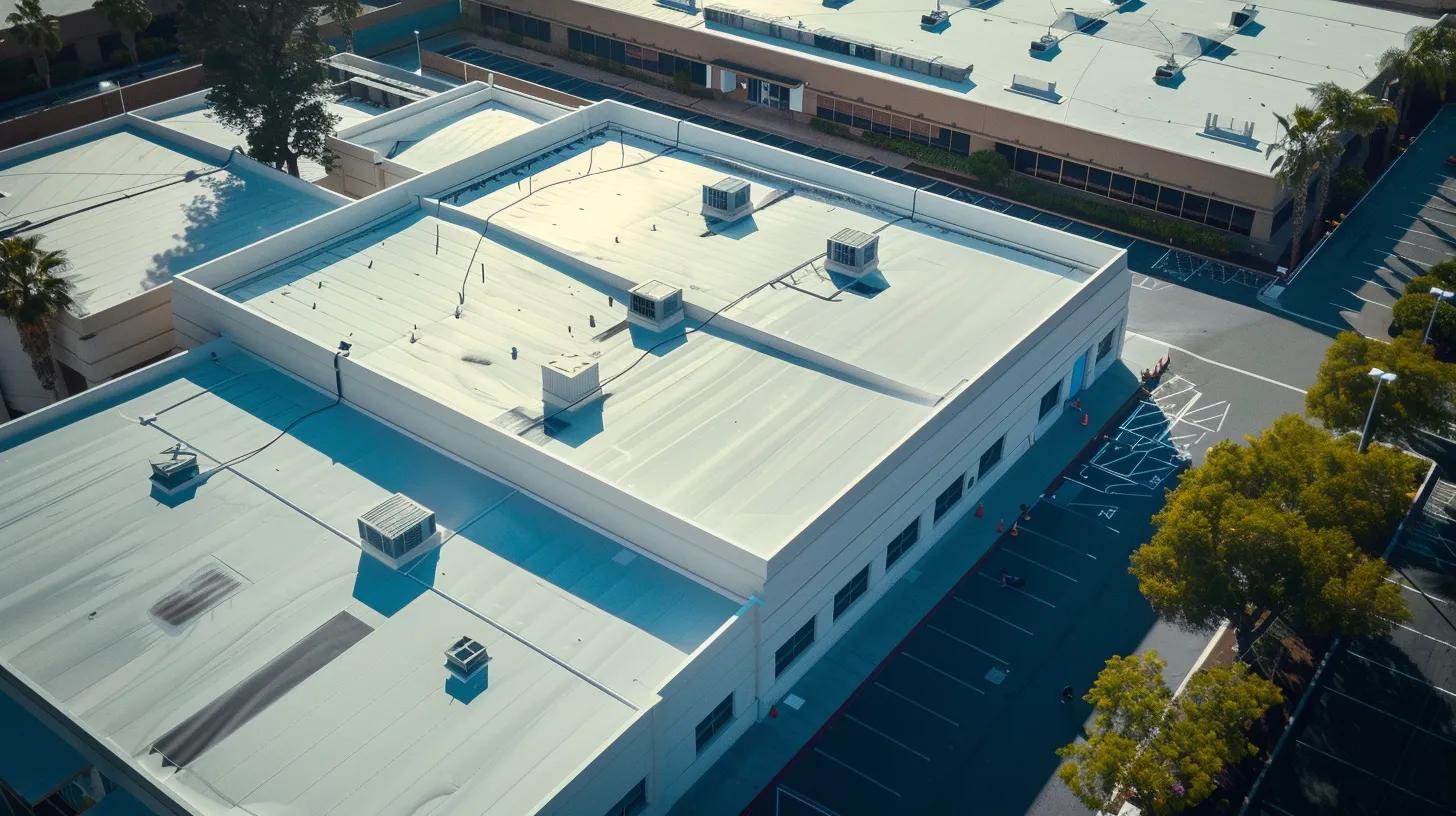
Clearwater’s commercial roofing systems must withstand high UV indices, salt-laden air, and powerful tropical storms. These stressors accelerate membrane aging, degrade sealants, and corrode metal flashing. By scheduling systematic inspections, you identify early signs of deterioration—such as blistering on PVC membranes or lifted seams on TPO roofs—before leaks compromise fire-rated assembly integrity.
A thorough inspection uncovers subtle issues under the roof surface. Infrared scans detect moisture pockets trapped beneath insulation layers, while drone surveys highlight areas of ponding water or damaged fasteners. Addressing these vulnerabilities during routine checks prevents structural deck decay, mold proliferation, and potential OSHA safety violations.
Insurance carriers often require proof of regular roof maintenance to honor storm damage claims. Clear documentation reduces liability and supports quicker payouts for repairs. Moreover, extending the service life of your roofing system lowers total lifecycle costs, preserving budget for strategic upgrades like energy-efficient roof coatings or green roof installations.
In the competitive Clearwater market, a well-maintained roof enhances property value and tenant satisfaction. Regular inspections demonstrate your commitment to facility safety and operational continuity—critical for businesses relying on uninterrupted climate control, leak-free storage, and stable roof-mounted equipment.
Key Factors Influencing Inspection Frequency
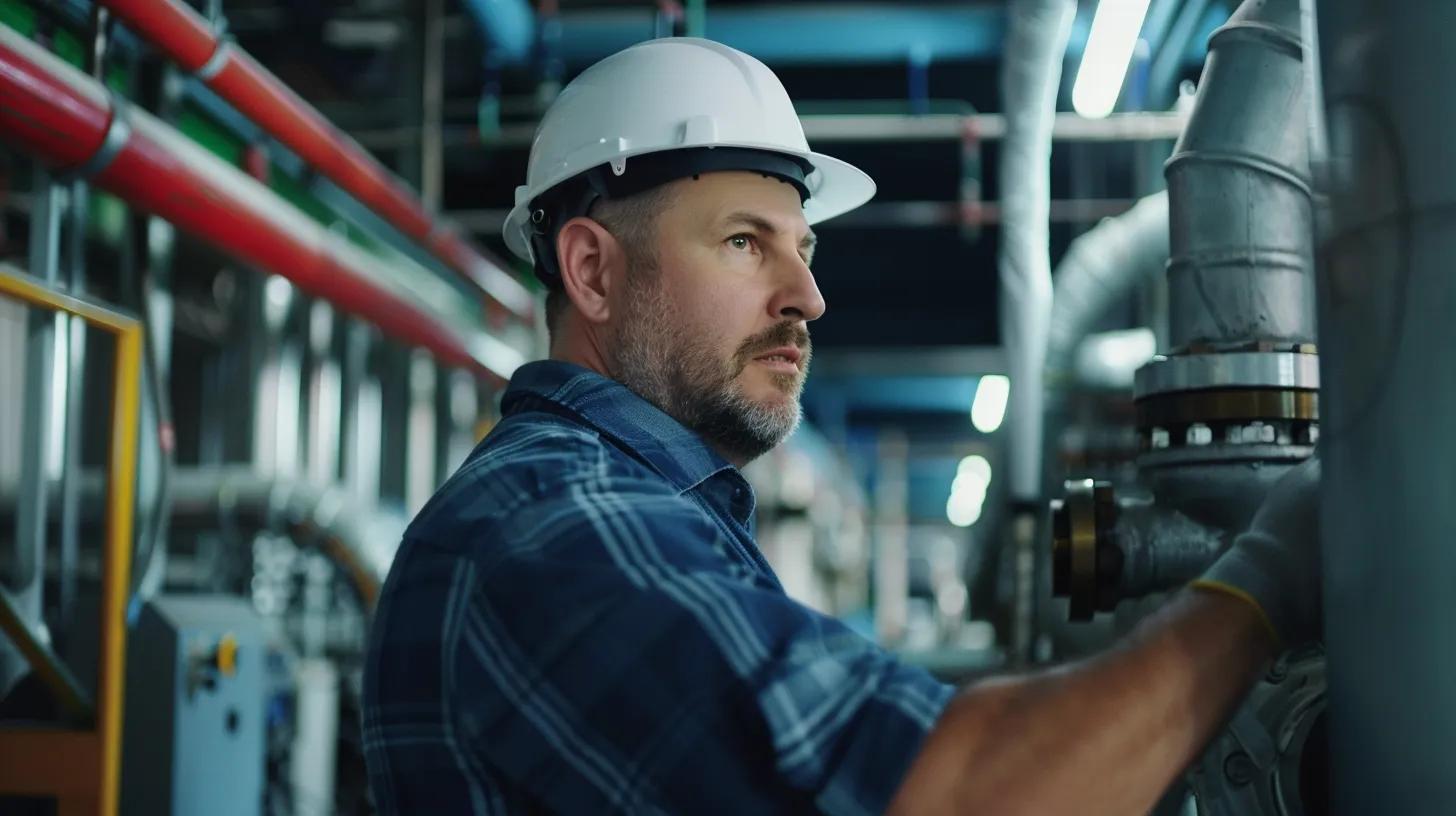
Determining the right inspection interval hinges on multiple variables. From the roof’s age and membrane type to environmental exposures and building occupancy, each facet influences how often you should engage in preventive maintenance. Let’s break down the most significant factors.
Age and Material of Your Commercial Roof
Newly installed roofs typically warrant annual inspections, as membrane settlement, thermal expansion, and adhesive curing can reveal early issues. As your roof surpasses the 10-year mark, inspect it semi-annually to monitor granule loss on asphalt shingles, seam integrity on TPO/EPDM, and corrosion on metal panels.
Different materials age at varying rates. Built-up roofing (BUR) systems resist UV better but can crack under freeze-thaw cycles. Modified bitumen delivers enhanced flexibility but may show stress at flashing transitions. Single-ply membranes—PVC, TPO, EPDM—exhibit distinct wear signatures. EPDM resists hail impact, while TPO can shrink and expose fasteners over time.
Document material performance meticulously; this data helps you refine inspection frequency. Track installation date, manufacturer warranty, and any past repairs to anticipate potential failure points. Proactive evaluation of membrane tensile strength and adhesive bonds reduces emergency intervention costs.
Climate and Environmental Stressors in Clearwater
Clearwater businesses face relentless UV radiation that degrades polymer membranes and accelerates sealant embrittlement. Salt spray from the Gulf of Mexico speeds up metal corrosion at gutters, downspouts, and metal edge flashing. High humidity levels can trap moisture in insulation, promoting rot in wooden decks and microbial growth beneath the membrane.
During hurricane season, sustained winds can uplift seams, puncture roof sheets, and dislodge ballast in loose-laid systems. After any tropical storm, schedule an immediate post-storm inspection to identify missing flashings, torn membrane patches, and ponding water zones. Even small tears can widen under high gusts, leading to interior water intrusion.
Thermal cycles—from scorching summer highs to milder winter lows—cause expansion and contraction in roofing materials. Over time, this movement stresses fasteners, creates micro-cracks, and degrades caulking around rooftop penetrations like HVAC curbs and vent stacks.
Building Use and Roof Traffic
Commercial roofs with frequent maintenance traffic, such as rooftop walkways servicing HVAC units or solar PV arrays, experience accelerated wear. Foot traffic can abrade protective coatings and expose fasteners to moisture. Clearly label designated walk paths with walkway pads and safety harness anchor points to minimize accidental damage.
Warehouses and distribution centers often feature roof-mounted photovoltaic panels. Panel frames can concentrate loads and stress flashing connections, necessitating targeted inspections around mounts. Regular checks of anchor bolts and mounting hardware prevent panel shifts that compromise seal integrity.
Restaurants and hospitality venues with skylights, exhaust vents, and grease hoods should inspect flashing and curb assemblies more frequently. Grease buildup can resist sealants, while heat from exhaust systems can accelerate roof membrane degradation in surrounding areas.
Standard Commercial Roof Inspection Schedule
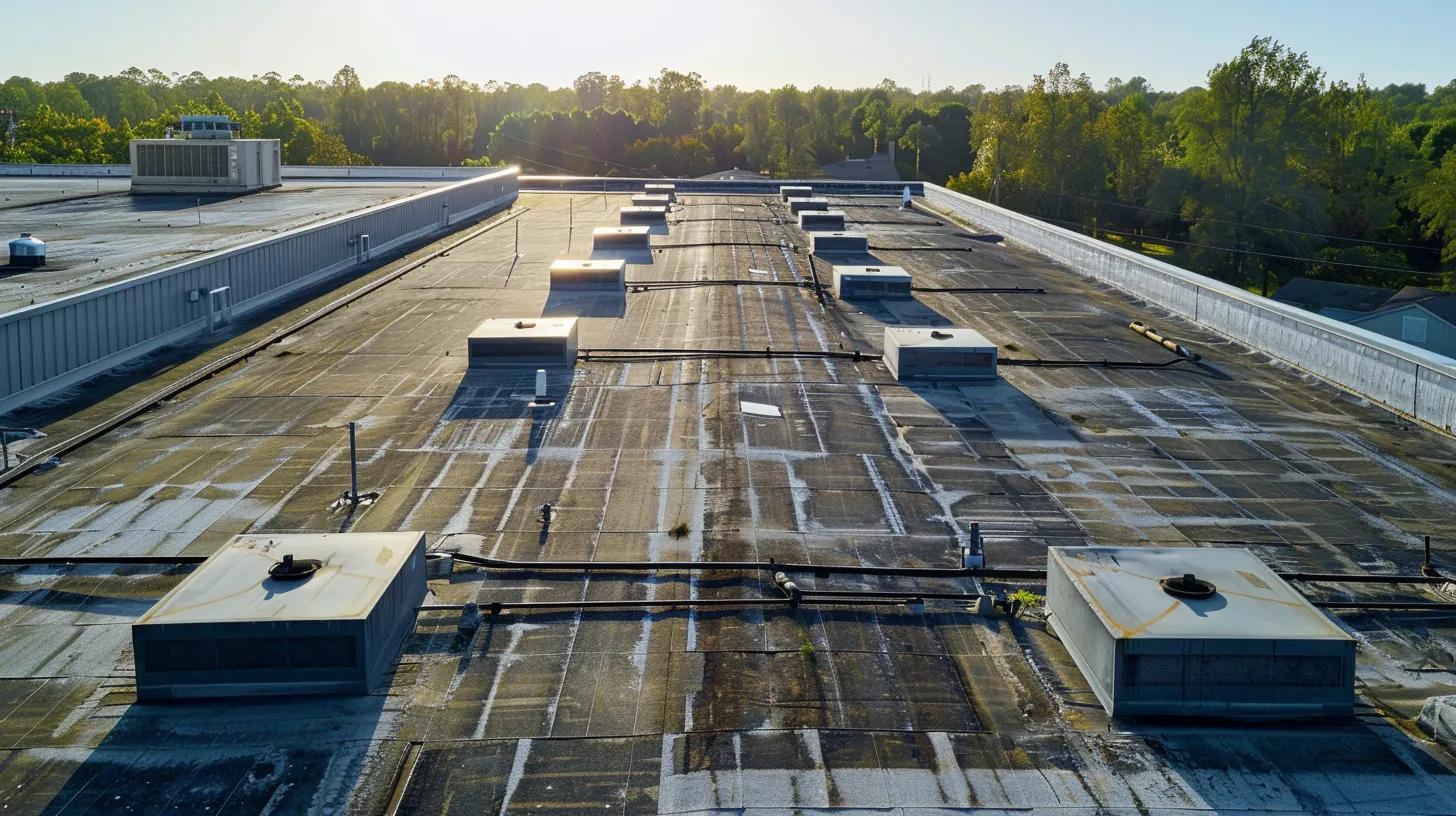
While every roofing system is unique, Clearwater businesses should adhere to the following baseline schedule:
1. Twice-yearly inspections: once in spring (post-winter prep) and once in fall (pre-hurricane readiness).
2. Post-storm evaluations: immediately after hurricanes, tropical storms, or severe hail events.
3. Specialty checks: quarterly for high-traffic roofs, roofs older than 15 years, or those with extensive rooftop plant installations.
Conduct spring inspections to assess any freeze-thaw damage, uplifted seams, or UV-related membrane degradation. Fall inspections target leak prevention before heavy rains and hurricane season, ensuring sealants, flashings, and drainage remain fully functional.
Adjust this schedule for specific risk profiles. If your facility houses sensitive equipment, pharmaceutical products, or temperature-controlled inventory, increase inspections to quarterly intervals. Building height, roof pitch, and lack of internal access may also warrant more frequent surveys using drone and infrared technologies.
Signs of Roof Wear to Watch For
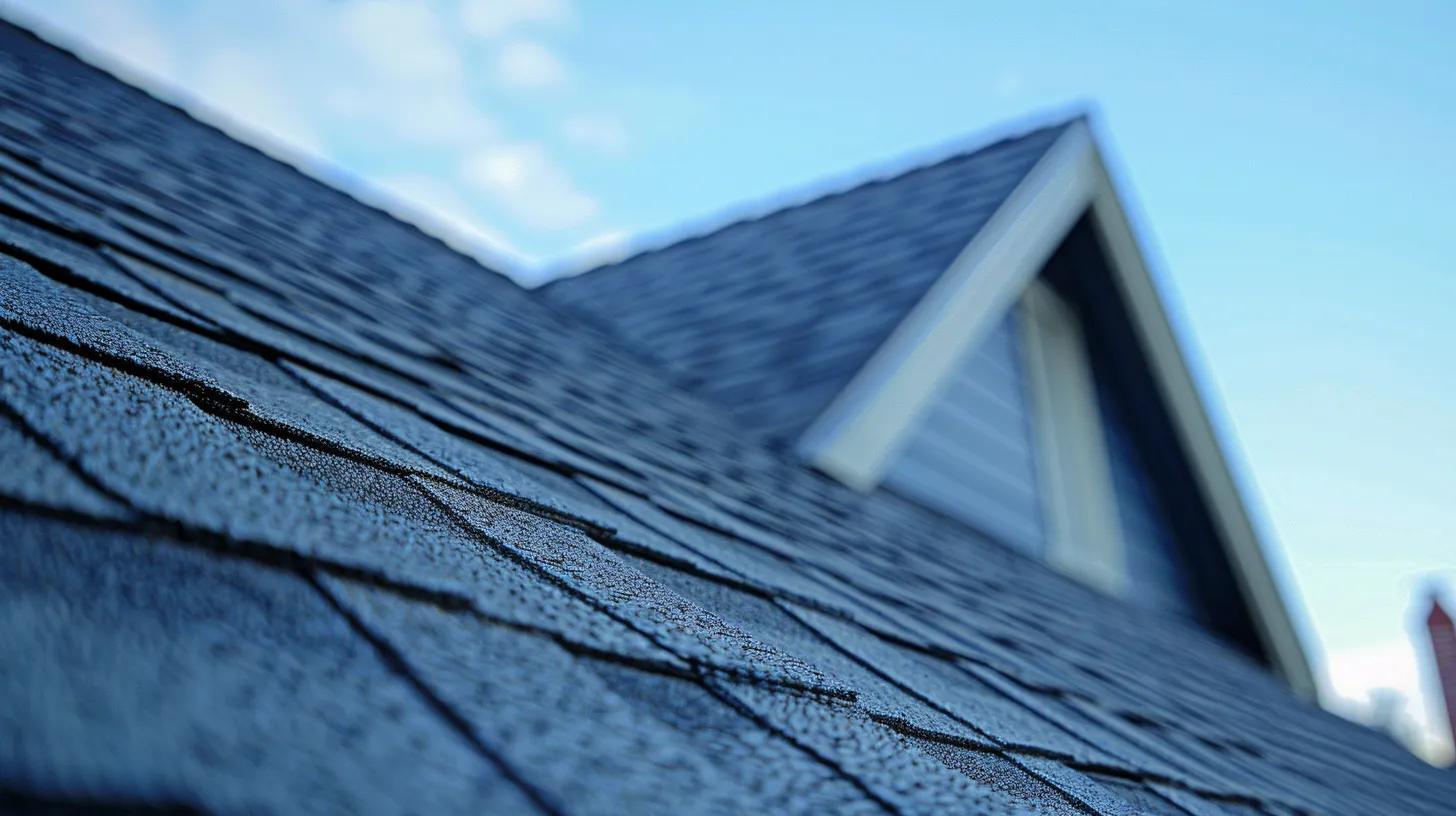
Timely identification of wear signs is the heart of effective roof maintenance. Watch for these indicators:
Visible ponding water after rainfall suggests inadequate drainage or clogged scuppers. Extended ponding accelerates membrane fatigue and invites biological growth.
Loss of ceramic granules on asphalt shingles or the emergence of bare spots on built-up systems reduces UV protection. Inspect gutters for granule accumulation.
Algae, moss, or lichen colonizing the surface can lift shingles, degrade rubber membranes, and retain moisture against the substrate. Professional cleaning and biocide treatments address microbial staining.
Cracked or warped flashing around parapet walls, roof vents, and skylights creates direct water entry points. Flashing failure is a leading cause of interior leaks.
Membrane blisters, cracks, and seam splits compromise the waterproofing layer. Check for adhesive bond failure and inspect lap seams on TPO and EPDM installations.
Accelerated wear often appears at membrane transitions and perimeter terminations. Corners and roof edges endure wind uplift forces; inspect metal coping and gutter hanger attachments.
Florida Roof Maintenance Best Practices
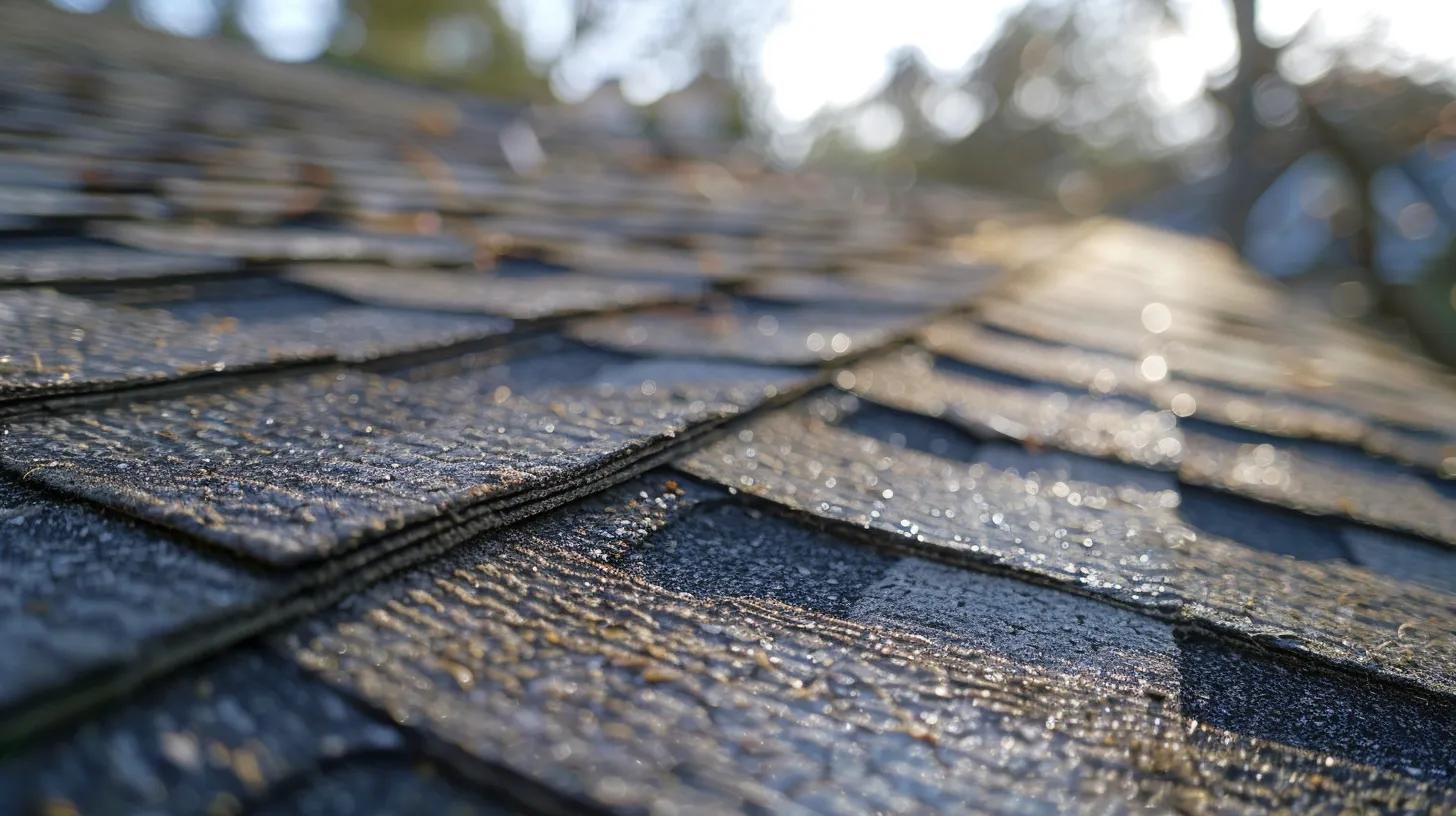
Comprehensive Florida roof maintenance extends far beyond inspections. Adopt these best practices to maximize your roofing system’s resilience:
Regularly clear debris—leaves, branches, and windblown trash—from roof surfaces and drainage paths. Debris can trap moisture and weigh down membrane overlays.
Schedule semi-annual gutter cleaning and downspout flushing. Blocked gutters lead to water infiltration at the fascia and soffit, jeopardizing structural sleepers.
Inspect and reseal parapet wall cap terminations, pipe penetrations, and roof hatch weatherproofing with UV-resistant elastomeric sealants. Proper sealant selection per ASTM D 6083 prevents premature cracking.
Apply reflective roof coatings or solar-reflective granule systems to reduce heat gain, lower cooling costs, and slow material aging. Reflective coatings also restore lost UV inhibitors in asphalt systems.
Install gutter guards and leaf screens to minimize maintenance frequency. Properly sized scuppers, overflow drains, and tapered insulation prevent ponding water.
For mixed-use structures combining retail, office, and residential components, coordinate maintenance efforts with Residential roofing services teams to ensure a unified building envelope approach.
Implement a digital roof asset management system. Capture high-resolution images, inspection notes, and infrared scans to track roof condition trends and plan budget-friendly repairs.
Choosing a Professional Roofing Inspector
Selecting qualified roofing professionals is paramount. Look for contractors with:
GAF, Carlisle, or Firestone certifications for single-ply systems and manufacturer-approved applicators for built-up and modified bitumen.
State of Florida roofing licenses and general liability insurance to cover property and worker safety. Verify compliance with OSHA and NFPA fire-safety standards.
Experience with local wind uplift ratings—FM 4470 approval and UL 580 classifications—ensures your roof meets Pinellas County wind resistance mandates.
Detailed knowledge of Florida building codes, including FBC requirements for insulation R-values in commercial roofs and impact ratings for coastal zones.
For top-tier service, rely on CB Roofing Solutions, a Clearwater-based expert team offering certified inspections, maintenance, and emergency repairs tailored to your facility’s needs.
Trustworthy inspectors perform a systematic evaluation: interior moisture assessments, roof deck deflection checks, membrane seam integrity tests, and flashing tightness trials.
Leveraging Modern Inspection Technologies
Advanced tools streamline inspections and enhance accuracy:
Drone surveys equipped with high-resolution thermal cameras detect heat signatures indicative of underlying moisture intrusion or delamination in membrane assemblies.
Infrared thermography highlights temperature differentials across insulation and membrane layers, pinpointing hidden leaks and saturated insulation.
Moisture meters and nuclear gauge readings quantify moisture content in roof board layers, guiding selective removals rather than full-roof tear-offs.
Roof plan mapping software integrates GPS-tagged photos, annotated defect markers, and repair recommendations into interactive digital dashboards.
Ultrasonic thickness gauges measure coating and membrane wear, ensuring compliance with manufacturer-warranty thickness criteria and FM guidelines.
Data-driven insights improve lifespan forecasting for TPO, EPDM, PVC, and modified bitumen systems, enabling you to budget accurately for recovery board replacements, re-coating cycles, and slate or metal panel refurbishments.
How to Document and Act on Inspection Findings
A robust inspection report forms the backbone of your maintenance strategy:
Begin with a clear executive summary outlining overall roof health, major vulnerabilities, and recommended repair scope.
Include annotated photographs of each defect—flashing gaps, seam splits, standing water zones—and reference roof plan coordinates.
Provide moisture infiltration data and membrane thickness readings alongside manufacturer warranty and FM Global approval requirements.
Supply multi-scenario cost estimates: targeted repairs for localized damage, full-area re-coating for general membrane fatigue, or complete roof replacement for end-of-life systems.
When specifying repair materials, consult Commercial Roofing Materials for Clearwater’s Climate to select coatings, membranes, and insulation boards engineered for high UV resistance and salt-spray durability.
After approval, schedule work promptly to prevent minor defects from expanding under wind uplift or heat cycles. Maintain records of repair invoices, material warranties, and follow-up inspections.
Ensure roofing contracts address emergency dry-in services, manufacturer-approved flashing details, and post-repair verification through infrared scans.
Final Words
Routine, well-documented inspections are your first line of defense against premature roof failures, structural damage, and unexpected downtime. By aligning your inspection schedule with your roof’s age, material composition, and Clearwater’s coastal climate challenges, you ensure a safe, energy-efficient, and durable roofing system. For professional assessments, maintenance plans, and rapid emergency repairs, trust the experts at CB Roofing Solutions—we provide this service with unmatched local expertise and industry certifications.
Frequently Asked Questions
How often should I schedule a roof inspection for my Clearwater commercial property?
Most Clearwater roofs benefit from twice-annual inspections—in spring and fall—plus storm-driven evaluations. Facilities older than 15 years or with heavy rooftop traffic should consider quarterly check-ups.
What are the most common signs of roof wear in Florida?
Look for ponding water, granule loss in gutters, algae or moss growth, flashing corrosion around penetrations, blistering in built-up systems, and detached membrane seams after high winds.
Can I perform a DIY roof inspection or should I always hire a professional?
While visual DIY checks can catch obvious issues, licensed professionals use infrared thermography, moisture meters, and drone surveys to identify hidden damage and ensure compliance with warranties and Florida building codes.
What does a typical commercial roof inspection report include?
A comprehensive report features an executive summary, annotated defect photos, moisture meter readings, membrane thickness tests, cost estimates for repairs or replacement, and manufacturer-approved repair protocols.
How does the hurricane season affect my inspection schedule?
Hurricane season (June–November) heightens wind-uplift and debris risks. Schedule pre-season inspections to reinforce flashings and drainage, and post-storm surveys to detect membrane tears, punctures, and standing water zones.

